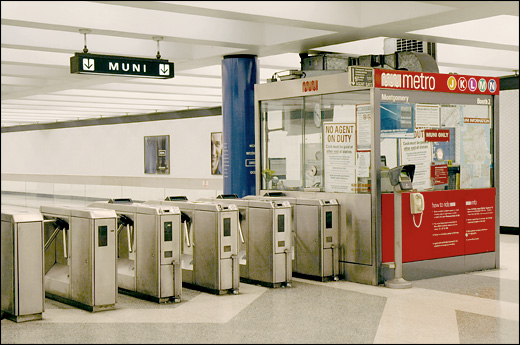
Muni Metro Service Design
The San Francisco Municipal Railway is a century-old institution that carries over 700,000 passengers a day throughout the city on a complex network of diesel and electric buses, historic streetcars and trolleys and light rail vehicles (LRV).I partnered with fellow CMU alumni Phi-Hong Ha to create an early research framework to examine the Muni Metro from a service design perspective. We then conducted independent observation and design for the project.
The Problem
The Muni network has grown organically over the past 30 years as new train lines have been added or removed and new signage deployed. Station design varies significantly from the majestic entrance at West Portal to the uninspiring concrete and fluorescent bunkers at Powell and Montgomery.The core of the Metro was originally designed for the regional BART commuter system in the mid-seventies. BART and Muni share the Market Street stations between Civic Center and Embarcadero. This is a source of endless confusion.
My Approach
I researched the history of the Muni and the development of the Metro and conducted ethnographic observation and interviews with passengers and Muni employees at each station along the Muni Metro network, compiling sketches and insights as I ventured further and further afield from my daily commute.To build perspective I conducted similar research on the Portland streetcar system and the Chicago El.
Initial Findings
Many of my design recommendations focus on clarifying the distinction between BART and Muni. Confusion between the two systems was one of the most common problems I observed for visitors to San Francisco, though I found that even existing residents were sometimes unclear about the difference. Some weren't even aware that Muni had its own subway.My findings are organized around a customer journey framework originally developed by IDEO for their Acela Amtrak project: learning, planning, starting, entering, ticketing, waiting, boarding, riding, arriving and continuing and reflect the full range of interactions within the Muni Metro service.
